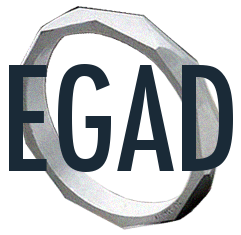Collecting Direct Evidence
![]()
For accreditation purposes, schools will be asked to provide a range of examples of completed and graded student work as direct evidence of learning. Direct evidence must be related to the indicators defined by the program. It is essential that the assessment tool used aligns with learning objectives. Possible assessment tools include:
[singlepic id=36 w=557 h=264 mode=watermark float=]
Can you identify which assessment tools will yield direct evidence of student learning?
[expand title=”Learning Activity: Assessments tools“] Using two of the indicators you wrote in Module 1, select at least two different ways you might choose to conduct assessment:[/expand]
- Determine three ways that they could be assessed (a list of assessment tools are on summary sheet), at least one done using a direct assessment tool
- If any are difficult to measure, consider whether the criteria should be modified
Because the accreditation process requires submission of a range student work at varying levels. This range includes: below, at and above threshold levels. As a result, a threshold for success must be determined.
Targets and thresholds
![]()
An example of how targets and thresholds could be incorporated into an assignment is shown below. It shows a rubric used to assess specific indicators where the threshold and target descriptions are highlighted.
Example:
[singlepic id=40 w=485 h=264 mode=watermark float=][expand title=”Learning Activity“]Using the indicators you wrote while completing Module 1, and with the methods of assessment you selected to gauge students’ success in mind, describe the characteristics of a minimal successful performance (threshold).
[/expand]
![]()
Below is an alternative example that does not use rubrics, rather it has well developed targeted questions in assessing specific indicators.
[expand title=”Examples: Knowledge assessment (Click to expand) ” rel=”expendable-highlander”]Calculus instructor asked questions on exam that specifically targeted 3 assessment criteria for “Knowledgeâ€:
- “Create mathematical descriptions or expressions to model a real-world problemâ€
- “Select and describe appropriate tools to solve mathematical problems that arise from modeling a real-world problemâ€
- “Use solution to mathematical problems to inform the real-world problem that gave rise to itâ€
The student can create and/or select mathematical descriptions or expressions for simple real-world problems involving rates of change and processes of accumulation (overlaps problem analysis)
Context: calculating intersection of two trajectories
[singlepic id=41 w=378 h=284 mode=watermark float=] [/expandsub1] [expandsub1 title=”Indicator 2″ expanded=”true”]Students can select and describe appropriate tools to solve the mathematical problems that arise from this analysis
Context: differentiation similar to high school curriculum
[singlepic id=42 w=378 h=284 mode=watermark float=]Context: implicit differentiation, trig inverse
[singlepic id=43 w=378 h=284 mode=watermark float=] [/expandsub1]Physics course instructors administering the Force Concept Inventory (FCI) before and after course in mechanics to assess conceptual understanding
Allows for benchmarking, which is difficult to do for most other indicators.
[/expand]![]()
View the Live Workshop on Assessment Tools:
![]()
